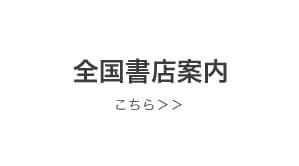Essential Manual on Perfect 24-hour Blood Pressure Management from Morning to Nocturnal Hypertension:Up-to-date for Anticipation Medicine
著:Kazuomi Kario
内容紹介
【当書籍は英文記載となります】
It is well known that cardiovascular events occur more frequently in the morning because blood pressure (BP) has been shown to increase during the period from night to early morning. In recent years, clinical research using ambulatory BP monitoring (ABPM) or home BP monitoring (HBPM) has clarified that morning BP, morning BP surge, and uncontrolled nocturnal hypertension are more closely associated with cardiovascular risk than clinic BP.
This practical manual from a leading expert in the field, Dr. Kazuomi Kario, reviews recent evidence on “morning” and “nocturnal” hypertension, and provides guidance towards achieving the goal of “perfect 24-hour BP control”. This includes up-to-date information on his research and development of IT-based BP monitoring systems, facilitating “anticipation medicine” for zero cardiovascular events.
目次
Contents
Author biography, x
Preface, xii
Acknowledgments, xvii
CHAPTER 1 Out-of-clinic BP, 1
SPRINT and automated office BP, 1
Different clinical BP measurements, 1
Diagnosis of hypertension and subtypes, 4
CHAPTER 2 Morning and nocturnal hypertension as therapeutic
targets, 7
Definition of morning hypertension, 7
Definition of nocturnal hypertension, 7
Shift of the prevalence of morning hypertension by
2017 AHA/ACC guidelines, 10
When to use home and ambulatory BP monitoring, 11
Staged management of morning and nocturnal hypertension, 14
CHAPTER 3 Home BP monitoring and morning hypertension, 17
How to measure home BP, 17
Evidence for morning hypertension control, 21
Subtypes of morning hypertension, 27
CHAPTER 4 Ambulatory BP monitoring, 29
ABPM parameters, 29
Normal and typical patterns of ambulatory hypertension subtypes, 32
Development of ICT-based multisensor-ABPM (IMS-ABPM), 32
New ABPM indices, 33
Anticipation of ambulatory BP, 44
Multi-sensors and the real-time hybrid Wi-SUN/Wi-Fi
transmission system, 46
HI-JAMP registry, 49
CHAPTER 5 Morning surge in BP, 51
Definition of MBPS, 51
Cardiovascular events with MBPS, 52
Organ damage with MBPS, 54
Hypertensive heart disease, 55
Vascular disease and inflammation, 56
Silent cerebrovascular disease, 58
Chronic kidney disease, 59
Determinants of MBPS, 61
“Thermosensitive hypertension” and MBPS, 61
Mechanism of morning risk, 63
Haemostatic abnormality and MBPS, 68
Vascular mechanism of exaggerated MBPS, 71
CHAPTER 6 Nocturnal hypertension, 75
Circadian rhythm of BP, 75
Non-dipper/risers of nighttime BP, 75
Cardiovascular risk, 76
Organ damage and frailty, 80
Definition and risk of nocturnal hypertension, 83
Mechanism of nocturnal hypertension, 87
Associated conditions of nocturnal hypertension, 89
Diabetes, 89
Chronic kidney disease, 90
Sleep apnoea syndrome, 90
Extreme dipper, 93
CHAPTER 7 Development of nighttime home BP monitoring, 95
Cutting-edge of home BP monitoring, 95
Recommendation for nighttime home BP measurement, 95
Basic nighttime home BP monitoring (Medinote), 97
Trigger nighttime BP monitoring (TNP), 102
IT-based trigger nighttime BP monitoring system, 107
CPAP adherence and nighttime BP surge, 110
Antihypertensive medication on nighttime BP surge, 115
CHAPTER 8 Development of wearable beat-by-beat (surge) BP
monitoring, 119
CHAPTER 9 BP surge, 125
BP variability with different time phase, 125
The resonance hypothesis of BP surge, 125
Evidence and mechanism of BP variability, 127
Visit-to-visit variability in clinic BP, 128
Ambulatory BP variability, 132
Home BP variability, 132
Maximum home SBP, 134
Standard deviation of morning home BP, 136
Morning-evening difference (ME-dif), 137
Morning orthostatic hypertension, 138
CHAPTER 10 What is systemic haemodynamic atherothrombotic
syndrome?, 145
A typical case of SHATS, 145
Clinical relevance of SHATS, 148
Pathological target of SHATS, 150
Mechanism of vicious cycle of SHATS, 152
CHAPTER 11 Biomarker of SHATS, 157
Vascular biomarkers, 157
1) CAVI/PWV, 157
2) Central pressure, 162
3) Flow-mediated dilatation (FMD), 163
Cardiac biomarkers, 163
1) NT-proBNP, 163
2) High-sensitivity troponin T (hs-TNT) and growth differentiation factor
15 (GDF-15), 167
3) Electrocardiography (ECG), 167
Microalbuminuria, 168
Brain, 168
Baroreflex sensitivity, 173
CHAPTER 12 Antihypertensive strategy, 175
Chronotherapy, 175
Salt restriction, 177
Drug treatment, 177
CHAPTER 13 24-hour BP-lowering characteristics of drugs, 181
Diuretics, 181
Calcium channel blockers, 181
Amlodipine, 181
Nifedipine, 185
Cilnidipine, 187
Azelnidipine, 188
Angiotensin-converting enzyme inhibitors, 188
Angiotensin-receptor blockers (ARBs), 190
Valsaratan, 190
Telmisartan, 190
Candesartan, 190
Olmesartan, 192
Azilsartan, 197
Alpha-adrenergic blockers and beta-adrenergic blockers, 199
Sacubitril/valsartan, 201
SGLT2 inhibitor, 205
CHAPTER 14 Combination therapy: Home and ambulatory
BP-profile-based combination strategy, 211
First-line therapy, 211
Second-line therapy, 211
Arterial stiffness type, 211
Volume retention type, 212
Third-line therapy, 214
Evidence of RAS inhibitor-based combination, 214
CHAPTER 15 Resistant hypertension and renal denervation, 227
The strategies for the management of resistant hypertension, 227
Fourth-line therapy, 227
Era of renal denervation, 230
Hypothesis of perfect 24-hour BP control by renal denervation, 231
Evidence for renal denervation, 231
Morning BP, 234
Nighttime BP, 234
Sleep apnoea, 235
Isolated systolic hypertension, 235
Potential beyond-BP effect, 235
The Symplicity Spyral™ and evidence, 236
Current potential candidates, 239
Responders and future indication of renal denervation, 242
CHAPTER 16 HOPE Asia Network, 245
HOPE Asia Network formation, 245
Characteristics of cardiovascular disease in Asia, 249
Obesity and salt intake in Asia, 249
24-hour ambulatory BP profile in Asia, 255
Facilitation of a home BP-guided approach in Asia, 256
Asia BP@Home study, 258
CHAPTER 17 Disaster hypertension and ICT-based
home BP monitoring, 259
Disaster hypertension, 259
Disaster cardiovascular prevention (DCAP) network, 259
ICT-based BP control: successful model of telemedicine, 266
CHAPTER 18 Anticipation telemedicine, 269
Anticipation medicine, 269
Concept of event management, 269
Innovation technology, 271
Telemedicine and telecare, 272
References, 275
Index, 303
ISBN:9784939028489
。出版社:ワイリー・パブリッシング・ジャパン
。判型:A5
。ページ数:328ページ
。定価:6500円(本体)
。発行年月日:2018年03月
。発売日:2018年03月23日。










